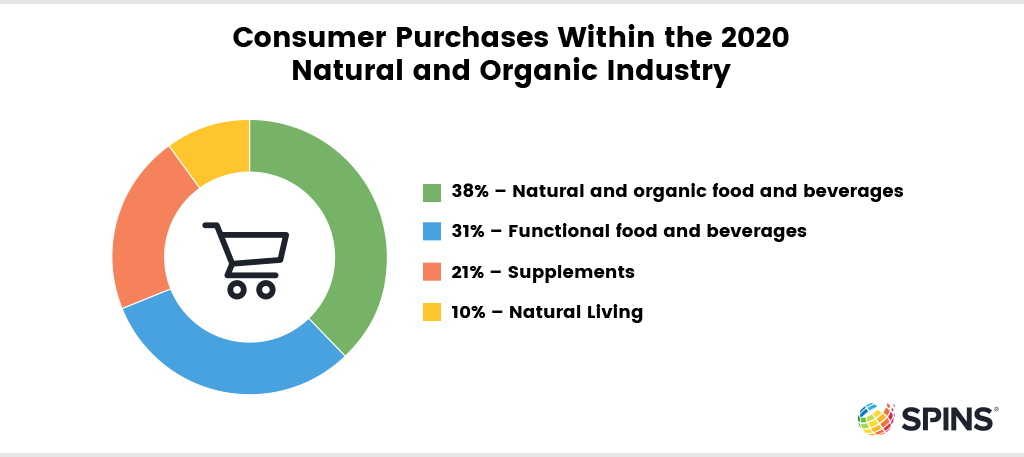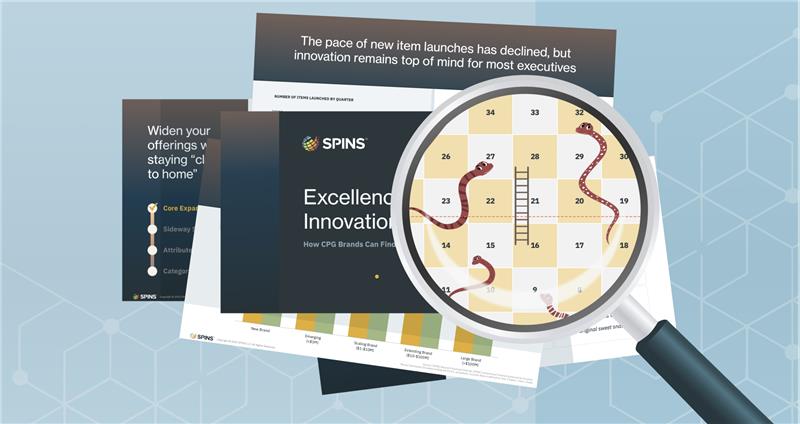The Case for Natural Product Integration in Retail
The days of natural products being a passing trend or a niche focus are long gone. This year’s grocery sales have been at historic highs thanks to the shopping frenzy that the pandemic kicked off, but there’s another story even within that data. Sales have remained elevated since March, and customers have flocked to natural products like never before. In that time, natural sales have shown a higher year-over-year growth rate than conventional sales, proving that shoppers are doubling down on their commitment to natural products, especially now that health is top of mind.
Yet, despite natural’s mainstream appeal, many retailers continue to isolate their natural products to its own section.
SPINS data shows that 99% of households made a natural and organic purchase in the past year. Creating a store-within-a-store concept made sense when natural shoppers were a small segment of your audience and inventory was fairly limited, but that’s clearly not the case anymore. Many retailers—from regional grocers to multioutlet stores—have already made the switch to natural product integration, but others are hesitant. The reality is that today, you risk losing out on sales if you’re still separating your conventional and natural products.
Shoppers Expect Integration
The pandemic has proven that natural products are a fixture of grocery lists for many shoppers. The consistently strong growth throughout 2020 not only signals a loyal customer base but also suggests natural products aren’t just for a small dedicated audience of shoppers committed with strict diets such as vegan or clean label. More lax shoppers who don’t follow a particular diet are incorporating healthier products into their daily lives and purchasing a natural product now and then when they go to the store.
Retailers are often concerned that they don’t have the right assortment to seamlessly integrate natural products onto the shelves throughout the story. The right data can solve that. SPINS has market insights and natural channel data to give you an understanding of what customer are looking for so you can reevaluate your inventory and plan your natural product integration strategically.

Integration Is a Better Customer Experience
Because customers expect natural products to be grouped with their similar counterparts, they enter the store expecting a streamlined shopping experience. When the natural selection as limited, shoppers didn’t expect to find a variety of natural choices in any category, let alone across several. However, today’s inventory offers natural selections in shelf stable items, produce, beverages, proteins, and even body care.
No one wants to zig zag around the store searching for the natural department and passing the conventional counterparts along the way. That’s a frustrating experience that will either lead customers to give up searching for that product or choosing another retailer with a friendlier layout. Either way, your sales could suffer.
Integration Provides Discoverability
When the pandemic pantry loading phase occurred, the sales boon for basically every channel made sense. Shoppers were grabbing any item they could, leading many products to sell out and forcing some shoppers to try an unfamiliar brand. Even outside of a pandemic, that kind of incidental purchase happens all the time. Attractive packaging grabs a customer’s eye or the one ingredient they need for a recipe is only available from a natural brand. That’s not likely to happen if natural shoppers spend most of their time isolated to one area of the store or conventional shoppers never have the opportunity to stumble across natural items.
Now that natural items are in the average shopper’s basket, we need to make them easier to find. Product integration not only makes your store layout simpler, but it also improves the shopping experience for your customers.
Don’t worry about how this product integration affects your reporting. SPINS’ reporting tracks natural and conventional products at the point of sale, no matter where they are located in your store. Your customers get a better experience and you still have the detailed reporting you need to assess performance.





